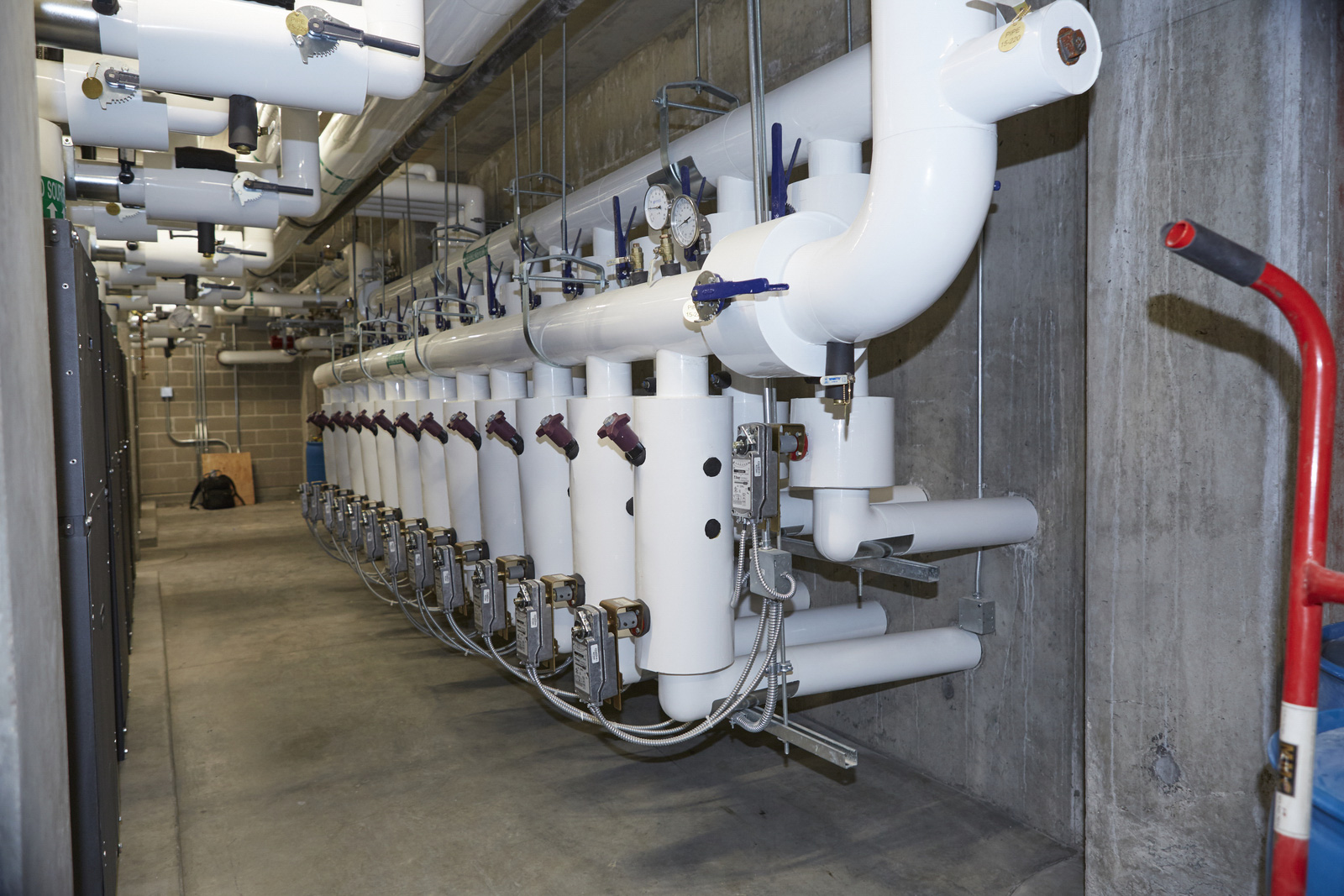
A familiar adage maintains people should practice what they preach. Engineers with the Karges-Faulconbridge, Inc. (KFI) consulting firm strongly support that concept. In fact, the firm’s office at the intersection of Dale Ave. and County Road B West in Roseville provides an excellent example of that belief.
Engineering Minnesota
2016 print-only edition
A familiar adage maintains people should practice what they preach. Engineers with the Karges-Faulconbridge, Inc. (KFI) consulting firm strongly support that concept. In fact, the firm’s office at the intersection of Dale Ave. and County Road B West in Roseville provides an excellent example of that belief.
The firm specializes in designing and developing energy efficient structures for clients and its 670 County Road B West office illustrates benefits of that approach. The firm took over a converted grocery story in 2003 and made it into a very energy efficient office building. “We figured the best example would be to show clients what we could do for them by doing something ourselves,” explained Randy Christenson, P. E., a mechanical engineer and principal with the firm. The Karges-Faulconbridge building is home to 80 of the firm’s 100 employees, with the remaining workers in the firm’s other offices in North Dakota, Iowa and Wisconsin.
A current client is Margaret A. Cargill Philanthropies (MACP) based in Eden Prairie, the largest philanthropic organization in the state. The organization was looking to substantially increase the size of its 27,000 square-foot building at 6889 Rowland Road by adding 66,000 square feet. An overall goal was to protect adjacent wetland and maximize sustainable resources. MACP was looking to add several features including a green roof, a geothermal system, water capture for irrigation, solar lighting, and low mow landscaping and permeable pavers. A goal was to obtain LEED Platinum certification from the U. S. Green Building Council. The organization sought responses from various engineering firms to work on the project, and eventually selected KFI.
“We welcomed the challenge this project presented,” Christenson said. “We knew MACP was committed to having a well-designed and energy efficient structure and realized reaching that goal would require an innovative approach. We also knew meeting expectations would require significant creative thinking and some variances in current requirements from local government.”
He acknowledges the effort was aided by the cooperation provided by the city of Eden Prairie as well as others. Christenson cited, as an example, the decision to place a ground source well system in nearby Nine-Mile Creek, which generated concern from environmentalists about the potential for groundwater contamination. Anxiety was alleviated by the use of propylene glycol, a food-grade anti-freeze, and with the placement of an alarm system that would sound and create an immediate shutdown if any loss of pressure was detected.
Additionally, MACP requested and received a municipal waiver pertaining to a limit on building height to construct an elevator that provides penthouse green roof access. The municipality’s planning commission also voted unanimously to approve waivers for underground parking.
Other building features include photovoltaic and solar thermal panels on 60 percent of the building’s roof and Greywater drip irrigation systems, the first such approved project in the state. Other features are a rainwater collection system featuring a 55,000 gallon storage capacity and plumbing fixtures that cut water use by almost 40 percent.
The sustainability effort did present challenges. “An ideal goal of a project is a net zero impact,” explained Katherine Edwards, KFI energy simulation engineer. (A Net Zero Energy Building completely offsets its electric and fossil fuel energy use with renewable energy.) “But that reality can be expensive so you try to come as close to that goal as is economically possible,” she said. “The challenge we faced was to not compromise comfort while making sure costs were not too expensive.” That challenge, she observed, is familiar to most engineers. Edwards noted that the project was different because our project team used an integrated design process. Gensler Architects, in Minneapolis, brought all disciplines together early in the design. Energy modeling started early to track progress towards the project’s low energy goals.
Christenson points out that working with a philanthropic organization instead of a private business has an advantage in that some charities can be somewhat more flexible regarding costs. “Sustainability is an important aspect of the MACP overall philosophy so they were willing to make a long-term investment,” he said. “You don’t always find that willingness in the private sector.”
KFI is a firm that moves comfortably between private and public sector clients and industries. In all cases clients are raising the bar of energy performance and water conservation. Much of the firm’s commercial work has centered on educational buildings. In recent years its educational clients have ranged from University of Iowa and Iowa State University, to the larges K-12 Districts in the state. One recent project, Alexandria High School, received several key design awards for sustainability, including a LEED Silver Rating).
The firm recently designed the mechanical and electrical power generation and distribution system for the nation’s largest collegiate turbomachinery laboratory at Ignition Park in South Bend, IN.
KFI does other local, non-education projects such as the The Rose, a 90-unit apartment complex constructed in the 1900 block of Portland Ave. in Minneapolis that provides “ultra-sustainability” for residents with a variety of incomes. That structure features solar thermal panels providing 80 percent of hot water requirements as well as illustrating the apartment’s sustainable emphasis. Water use is half that of a typical building the same size as a result of aeration and other techniques. Apartment units will use 30 gallons a day rather than the average of 75 gallons.
“Much of the work we do is challenging,” observed, KFI electrical engineer, Nick Oelke, PE, “but it can also be very worthwhile.”
The article originally appeared in the 2016 print-only edition of Engineering Minnesota

